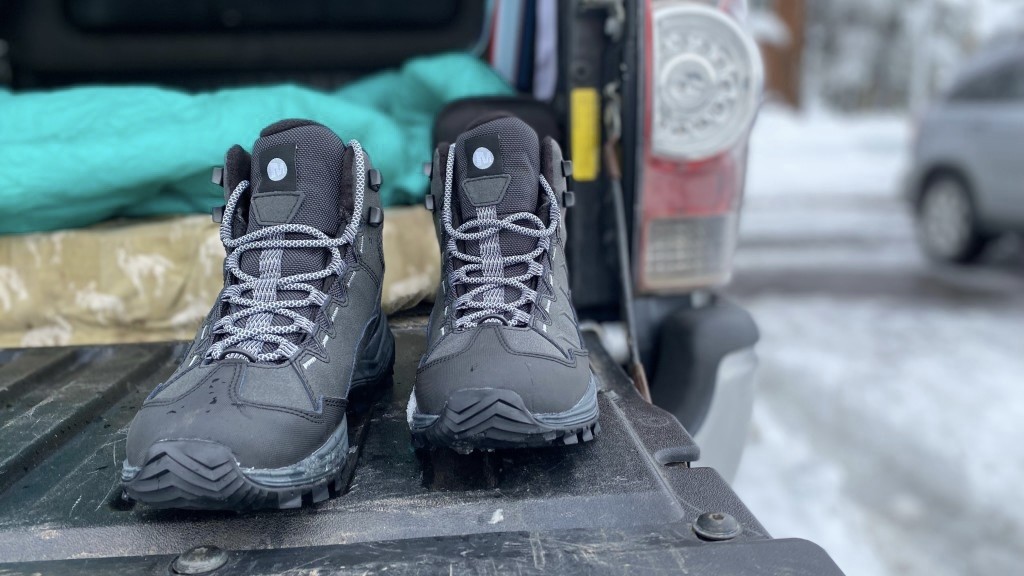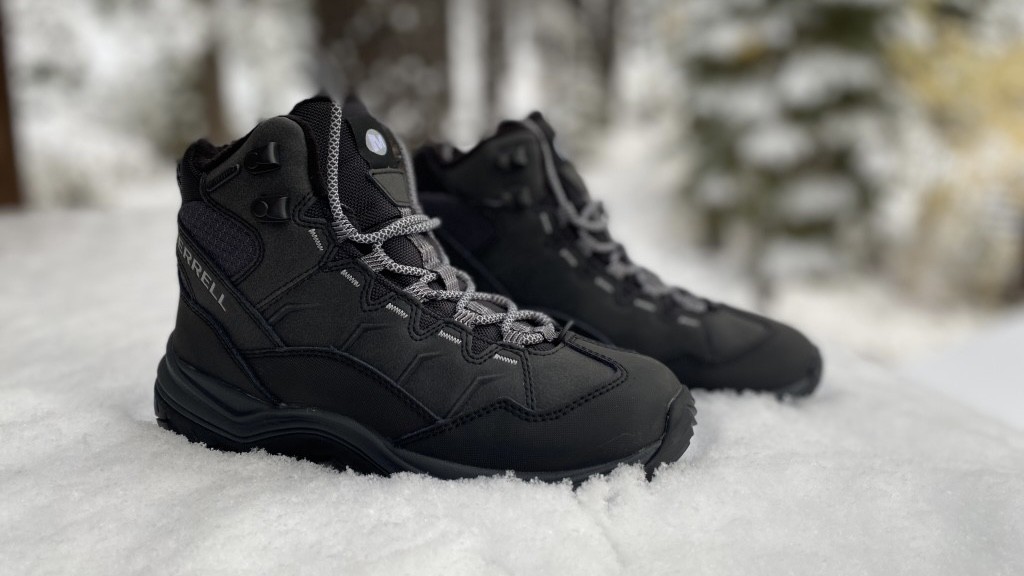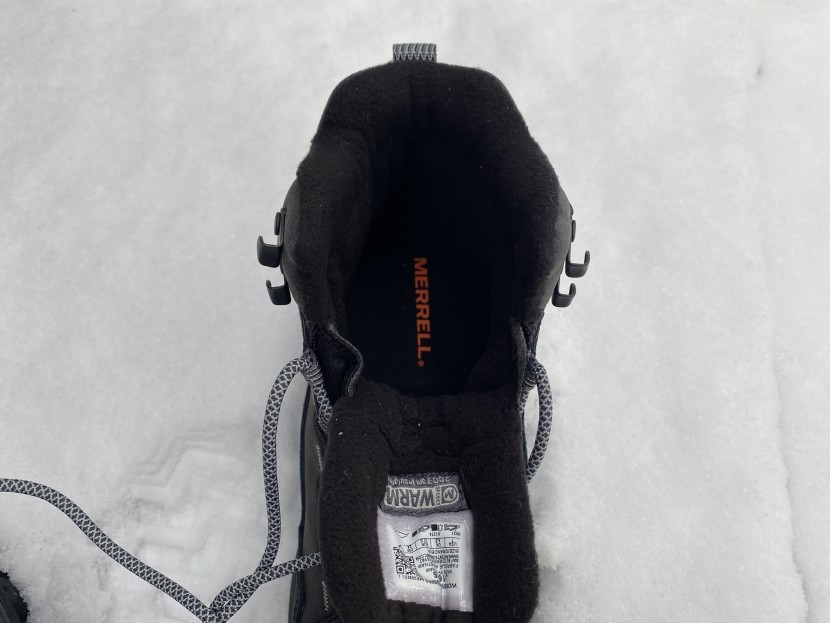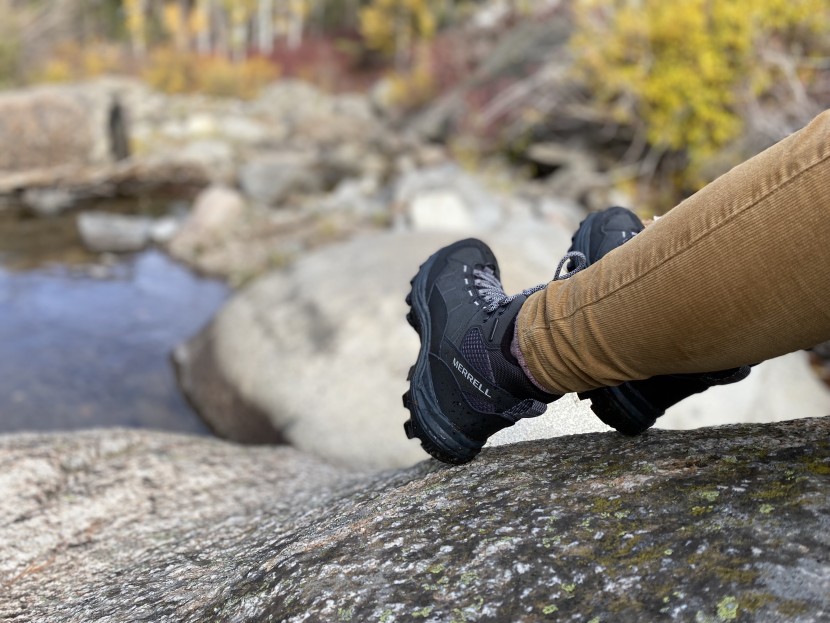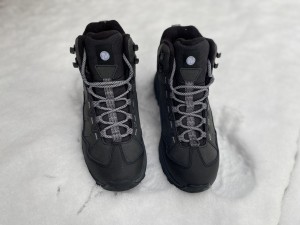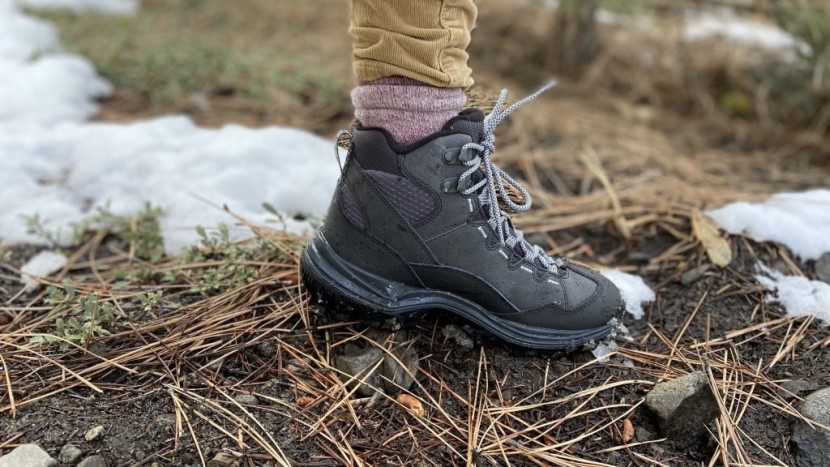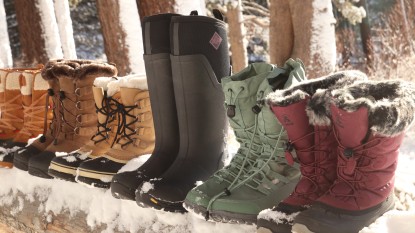Merrell Thermo Chill Mid WP - Women's Review
Our Verdict
Our Analysis and Test Results
Throughout our tests of hiking-focused winter boots, we found the Thermo Chill to be one of the most reliable boots in terms of traction and mobility. The outsole provides a sticky and sturdy base to grip uneven surfaces, whether on ice or snow. The 200 grams of Merrell Select Warm insulation bring incredible warmth to high alpine adventures, and the fit is snug enough to feel confident on steep inclines. That said, the fit is a bit too narrow for those with wide feet, and the insulation is almost too warm on warmer winter days. Otherwise, we were thrilled with the performance of this boot, all at a more-than-fair price point.
Warmth
The warmest options in our lineup all had roughly 200 grams of insulation, including this one. Merrell uses their proprietary insulation to bring excellent and reliable warmth to the Thermo Chill. Happily, this boot also has an impressive level of breathability, even when involved in sweaty situations with high moisture output. We did fall victim to swampy socks during a 50-degree day hike, but that seemed to be the exception.
During our ice bath tests, the Thermo Chill Mid had one of the lowest changes in temperature at -5.2°F. This means the boot has a high heat retention rate under exposure to cold temperatures. We wish the boot covered the skin above the ankle to increase this warmth retention but found that a thick tall sock did the job without limiting flexibility.
Weather Protection
The Thermo Chill Mid is noticeably designed to withstand the elements. The PU-coated leather and mesh exterior makes for a thick-yet-breathable barrier that kept our feet dry from water and snow throughout all our field tests. Hiking boots are designed with movement in mind, so when you factor mobility into the design, the boot height needs to be low enough to bend and flex the ankle. This lower height does, however, mean that the boot offers a bit less inherent weather protection than a taller boot. That said, gaiters are always a compatible option.
Again, a lower shaft and collar height means less coverage during deeper snow days. For some, this can be less than ideal. If you're a well-seasoned winter hiker, you're likely okay with wearing a thick pair of socks or strapping on a gaiter. Unfortunately, small amounts of snow stuffed into the boot's collar without a gaiter, but thankfully no snow seeped into the interior. We were most impressed with these boots' ability to keep water out. We submerged our feet in our local river for over 3 minutes, up to just an inch below the top of the boot, and experienced no water leakage. While this is only 5 inches of water resistance, that's likely all you need for typical weather.
Comfort and Fit
The Thermo Chill Mid gave us one of our favorite fits of all our tested boots. It is one of the more snug boots and has a super comfortable lining. That said, while our narrow-footed testers loved the fit, it was too tight for wider feet, mainly through the instep and toe box. Even our testers with narrow feet agreed that the boot feels somewhat tight with thick socks on.
Mobility is a huge factor in the comfort equation and a large part of why the Thermo Chill Mid scored so well here. We felt like we could run, jump, and skip on trails or simply walk around in it for an entire workday in this boot. The midsole structure paired with the Kinetic Fit Base footbed provides excellent arch support.
Traction
We were very impressed with the traction capabilities of the Thermo Chill Mid. The 5mm lug depth provides great traction on inclines, and the grippy wave pattern at the toe and heel creates a smooth transfer of balance on trails.
Despite the excellent traction we experienced during our testing period, the rubber on the outsole of the Thermo Chill is a bit softer than some of the other outsole compounds in our lineup. The drawback with soft rubber is its sticky nature on warmer surfaces and its quicker wear rate. Depending on your intended use for this boot, you could still get multiple seasons out of the soft rubber so long as it's used in primarily cold, wintery conditions. Bottom line, this is an all-around exceptional and versatile boot for everything from outdoor work to winter adventures to walks through the ski resort.
Durability
The Thermo Chill has PU-coated leather, which is far more waterproof than untreated leather, allowing it to withstand frequent exposure to moist environments. This boot also has deep lugs on the outsole made from a slightly softer rubber compound. This can wear more quickly on pavement and warmer surfaces but has a relatively long lifespan when used on colder surfaces.
Merrell's in-house M Select Dry permeable membrane increases the upper's breathability and helps extend the lifespan by increasing air and moisture flow. This may not be as obvious a part of durability. Still, the happier your feet remain through changing temperatures and moisture levels, the less overall strain is put on the materials of your boot.
Should You Buy the Merrell Thermo Chill Mid WP?
The Thermo Chill is a high-value, durable, and reliable winter boot. Despite a lack of style for everyday use, it is incredibly functional and therefore versatile for most activities. For those in need of comfort and support, this affordable boot will give you what you need. Wear it on the way to your local ski resort or a Sunday morning dog walk. We approve. This boot has one of the lowest price points in the group yet is one of the shining stars for warmth, comfort, traction, and protection.
What Other Winter Boots Should You Consider?
A slightly taller hiker we like is the Keen Revel IV Polar. With a somewhat higher price, this boot might be more appropriate for deeper snow or activities like snowshoeing. It offers similar warmth, weather protection, and traction to the Merrell. Alternatively, if you want a more all-around boot, the UGG Adirondack III is one to consider with impressive performance across the board, it is hard to do better, but the price is higher.


